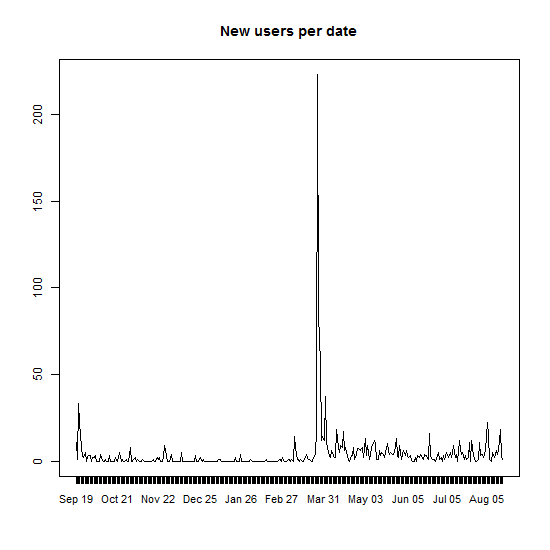Happy birthday to me! Dropproxy is one year
The experiment
A year ago, I launched this website. I had an idea and I was wondering if other people might use it, so I just started building it.
Now, one year later, I look back. Dropproxy in its current form was always meant to be an experiment and today is the day I collect the results of that experiment and draw some conclusions based on those results.
I must say that I was pleasantly surprised with the attention Dropproxy got in the last year. By the time it really gained momentum, Dropbox had implemented a new way of sharing files that, although it didn't make Dropproxy obsolete altogether, reduce the usefulness of this service.
In the press
One person that I must thank is Martin Brinkmann of ghacks. After I published the first version of the API, he contacted me about writing about Dropproxy. I answered some of his questions and he published his review the next day.
And this is where the ball really started rolling. After ghacks's review was published, Lifehacker picked it up and also wrote about it.
As you might imagine, this was quite a boost for Dropproxy and we had 1,132 visits that day (there were 383 visits the day before and 220 the day before that). So, ghacks and Lifehacker, thanks for writing about Dropproxy!
After Lifehacker, a lot of smaller blogs also wrote some things about the service.
Some stats
Downloads
There have been 403.045 downloads to date! This is much much more than I would have ever hoped.


I guess that these charts prove that the people that use Dropproxy actually share their links and that the people who click those links trust Dropproxy.
Files proxied
At this moment, 868 files have been proxied.


You can clearly see the effect the Lifehacker article had here.
User accounts proxied
At this moment, there are 1331 proxied user accounts.


Again, the Lifehacker spike is very, very visible.
Where to go from here
Looking at the data, it's pretty clear that there is definitely an audience for Dropproxy. I'm also pretty sure that some people are running their websites through Dropproxy, not really sure how I feel about that.
It's also pretty clear that the number of new files/users is disproportionate to the number of downloads. This was to be expected, as downloaders aren't really aware that they are using Dropproxy or what it is. Of course, I could put a loading screen before file downloads but that would destroy a large part of the value of the service so I'm not too keen on doing that.
For the foreseeable future, things will stay the same. I still plan to release the code under a free software license some day, but I don't have any concrete plans as of now.
Our API
Halfway through the year, I launched the Dropproxy API. In fact, this was what sparked ghacks to write the review and started the biggest wave of new users.
I'd like to remind everyone that the API is 100% open and that there is read and write access without authentication and limits.
I am really interested in hearing from people that are using it and their opinions on it. If you are a developer using the Dropproxy API, please drop me a message at dev@dropproxy.com.
If you would like to get your creation featured on our apps page, please let me know. I'm pretty sure I will accept almost everything (free of charge of course).
Feedback?
I'm interested in all user feedback, not just that of developers. To that end, I have put a Disqus comment section below. Guests can also leave comments so there's no reason not to tell me what you think!
One aspect that I could really use some feedback on is the spreading of Dropproxy usage. As I mentioned before, the virality of this service is almost zero. If you have any ideas on how to improve that, please let me know below (or send me an email).